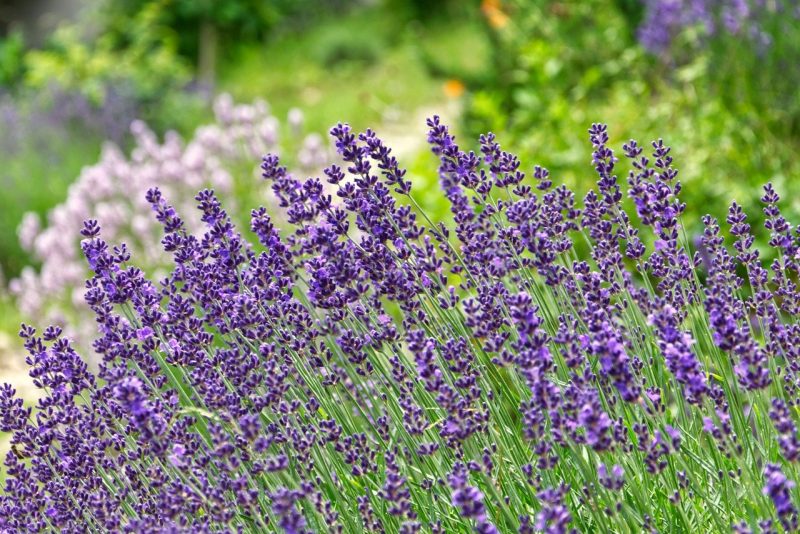You have three steps to consider to know how to grow lavender in Arizona. Depending on the type you have, you should create the ideal growing environment for lavender to ensure that they’ll thrive well in Arizona. Remember that only the best quality plants will sell best, and consistently producing them will make you stand out from the competition.
Using the three steps below, you should be able to grow lavender in Arizona without many drawbacks. However, remember that Arizona has growing zones ranging from 4 to 11, and some lavender species are suitable for specific conditions only. You can grow lavender in the greenhouse if your region has a challenging climate.

Growing Lavender In Arizona: 3 Steps To Success
Step #1. Planning
The first step and perhaps the most crucial step in growing lavender in Arizona is planning. First, consider what you’re going to use to start your lavender plants. Will it be more convenient to use seeds, or is it better to grow starter plants?
The latter is more advantageous since lavender plants can take longer to reach maturity. Therefore, starting with a healthy starter plant will make your garden more productive. Just be sure to check the plant itself for any damages or brown spots.
More so, remember that you are growing lavender in Arizona. The English lavender would suit the conditions in Arizona because it will thrive well in various situations. You can also grow in the greenhouse to mimic the ideal environment for the varieties you’re growing.
Step #2. Preparation
Once you have planned the plants, the next step is preparing the site for growing them. Lavender is already suitable for Arizona because this plant is best in areas that are hot and dry. However, you still need to select the optimal growing location to end up with quality and healthy flowers.
An area with full sun and well-draining soil would support lavender the best. More so, plan the spacing so that they have enough room to grow as they mature. Some recommend creating a hedge when planting lavender starter plants at 12 inches apart to have proper air circulation and avoid diseases.
It would be best to design a layout before planting and also test the soil to make the necessary amendments. You want to improve the soil structure to drain water well, and you want to fix its pH level since lavender will be problematic in acidic soil. You can mix sand and fertilize with lime before planting.
Step #3. Maintenance
After planting, the next step is ensuring proper maintenance of your lavender plants. This will guarantee healthy and high-quality blooms, regardless of your area in Arizona or the species you’re growing. For example, a common practice that results in problems is overwatering.
Remember that these plants don’t require as much water upon establishment. Water is essential in encouraging root development, but you want to limit the amount as moist conditions do not support lavender health. Lavender grows naturally in dry conditions, and it’s best to mimic that.
You can also encourage more blooms or extend your lavender’s flowering season by removing the dead and faded flowers. This will also rejuvenate your plants and grow better. More so, you can encourage new growth yearly by cutting down to the ground every spring.
What Lavender Variety Is Best For Arizona?
According to the Arizona Cooperative Extension, the standard varieties in Arizona are Spanish, French, and English lavender. Spanish lavenders are low-growing types that quickly provide color in spring to summer. They are also unique for having short flower heads instead of the typically long lavender blooms.
Another colorful consideration that you can grow is French lavenders. What makes them well-loved is the extended blooming season. With proper deadheading and ideal conditions, you can enjoy these lavenders’ high and wide growing habits for a long time.
Lastly, as recommended earlier, the English lavender would also be best for Arizona because it withstands challenging conditions. They will even thrive in the higher parts of the state because they tolerate the cold. More so, those who are growing lavender for scent will enjoy English varieties.
How To Harvest Lavender
Regardless of where you’re growing lavender, you must know how to harvest the plants properly. You want to start gathering them before the flowers open for optimal quality. Then, you can dry them for some weeks.
Dried lavender would store best somewhere cool and dry inside an airtight jar. Some even put the dried lavenders in a sachet to take advantage of the plants’ scent.
Conclusion
The dry conditions in Arizona make this state the best consideration for lavender. And if you’re interested in learning how to grow lavender in Arizona, you can simplify the process into three steps. It would also be best to take courses related to the cultivation of lavender to prepare you further.
The first step would be planning and selecting the best starter plants and varieties for your area. Then, you can prepare the site and how you’re going to cultivate lavender. This means ensuring that the soil and the general conditions are optimal for your varieties.
You can also consider growing in the greenhouse to mimic the natural habitat of your lavenders. Lastly, ensure proper maintenance consistently to create high-quality blooms that will stand amidst competition. Arizona is already feasible for lavender growth, but your practices will dictate the development of healthy and quality flowers.
